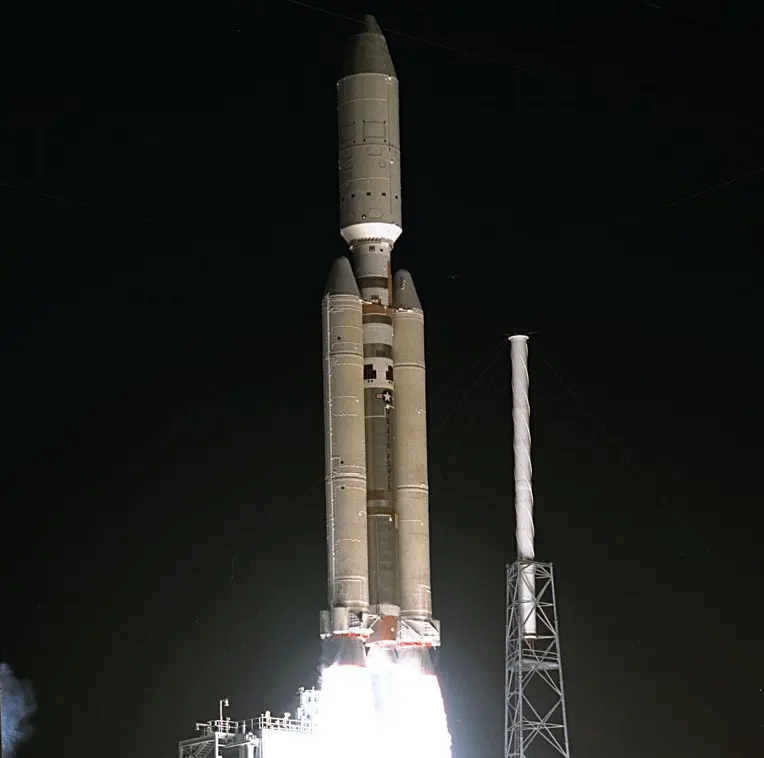Milstar DFS-3M
Launch Failure
Liftoff Time (GMT)
16:30:00
Friday April 30, 1999
Watch Replay
24/7 Coverage
Mission Details
Launch Notes
Incorrectly programmed guidance computer caused loss of Centaur attitude control. Payload was left in a useless orbit.
Milstar DFS-3M
Milstar (Military Strategic and Tactical Relay) is a constellation of military communications satellites in geosynchronous orbit, which are operated by the United States Space Force, and provide secure and jam-resistant worldwide communications to meet the requirements of the Armed Forces of the United States. Six spacecraft were launched between 1994 and 2003, of which only five were operational after launch; the third launch failed, both damaging the satellite and leaving it in an unusable orbit. This mission launched the previously mentioned failed third spacecraft. Milstar satellites provide secure, jam-resistant, worldwide communications to meet the requirements of the United States military. They were built by Lockheed Martin Missiles and Space Corporation, at a cost of US$800 million each. Each satellite has a design life of 10 years. Six were built, of which five reached their operational geosynchronous orbits, and remain in service. Launches were made using Titan IV rockets with Centaur upper stages, and all six occurred from Space Launch Complex 40 at the Cape Canaveral Air Force Station. The satellites are designed to provide communications that are hard to detect and intercept, and to be survivable in the event of nuclear warfare. The spacecraft is equipped with solar panels capable of generating eight kilowatts of electric power to power its transponders. Both Block I and Block II satellites provide low data-rate communications at bandwidths between 75 bit/s and 2,400 bit/s, whilst the Block II spacecraft can also provide medium data-rate communications between 4.8 kbit/s and 1.544 Mbit/s. The satellites' uplinks operate in the Q band, while their downlinks operate within the K band. The uplink corresponds to the extremely high-frequency band while the downlink corresponds to the super high-frequency radio band.
Geosynchronous Orbit
1 Payload
4,500 kilograms
Rocket


Agency
LockheedRocket
Height: 62m
Liftoff Thrust
15,000 Kilonewtons
Fairing
Diameter: 5.1m
Stages
3
Strap-ons
2
Launch Site
Stats
Titan IV
27th
Mission
2nd
Mission of 1999
1999
24th
Orbital launch attempt